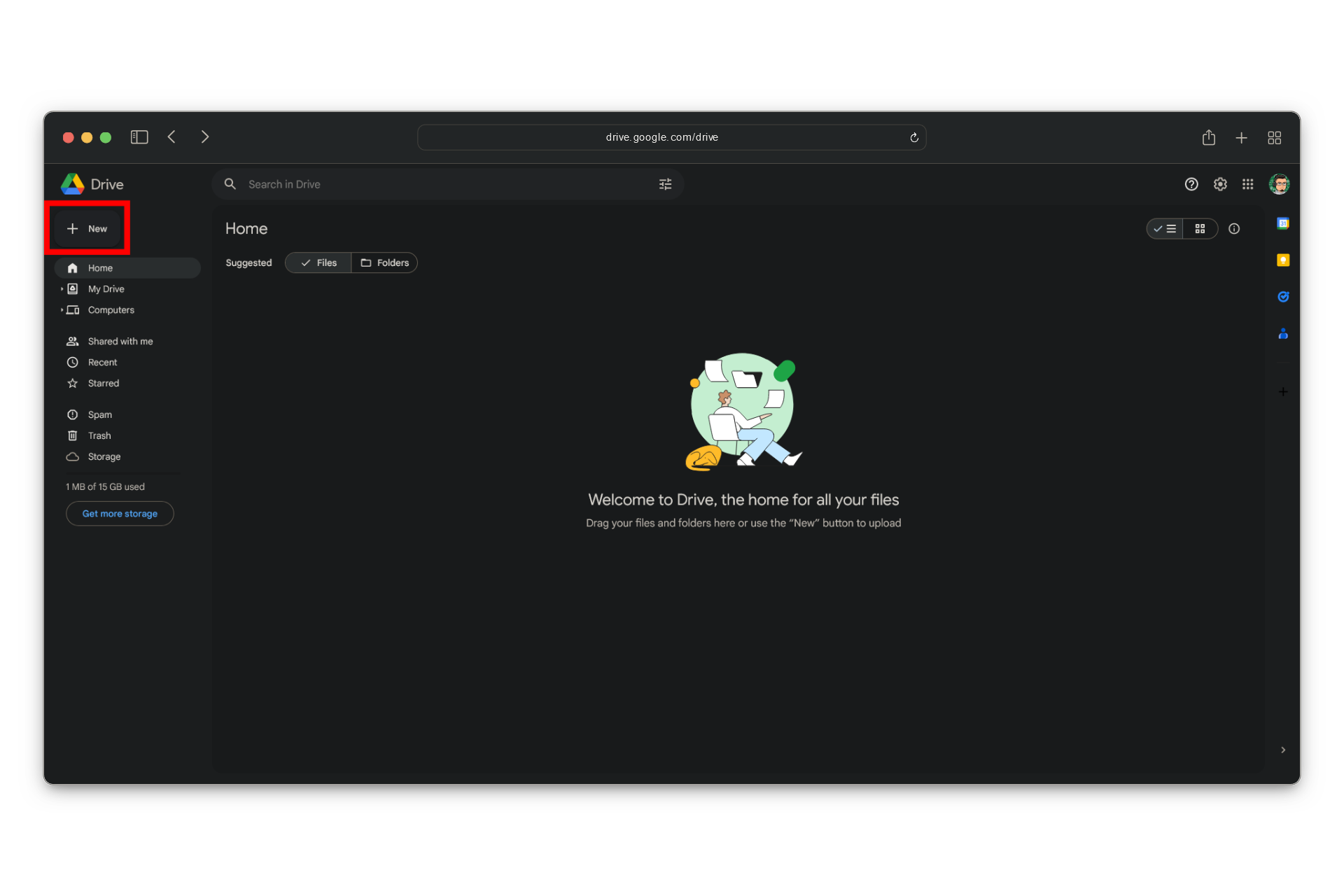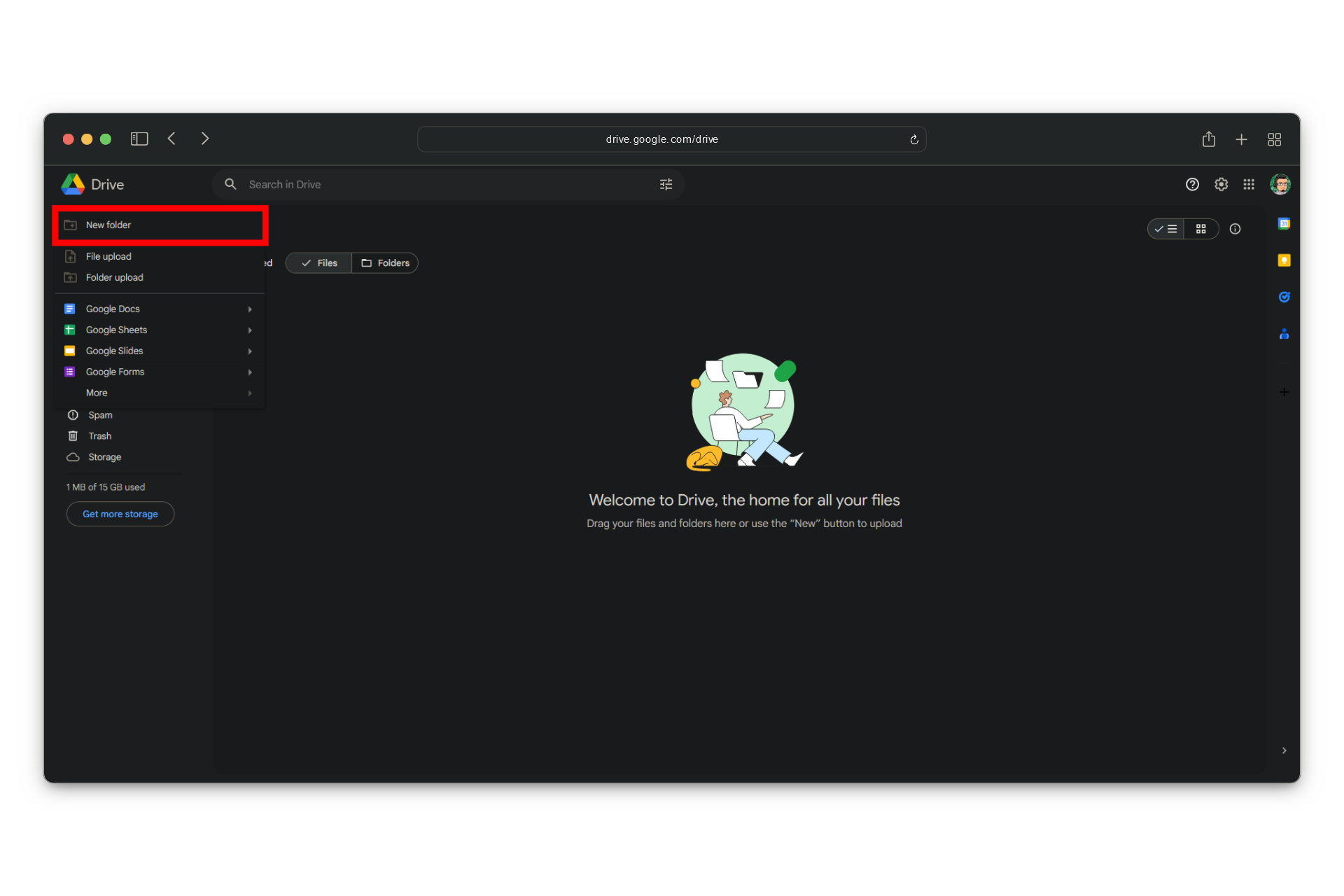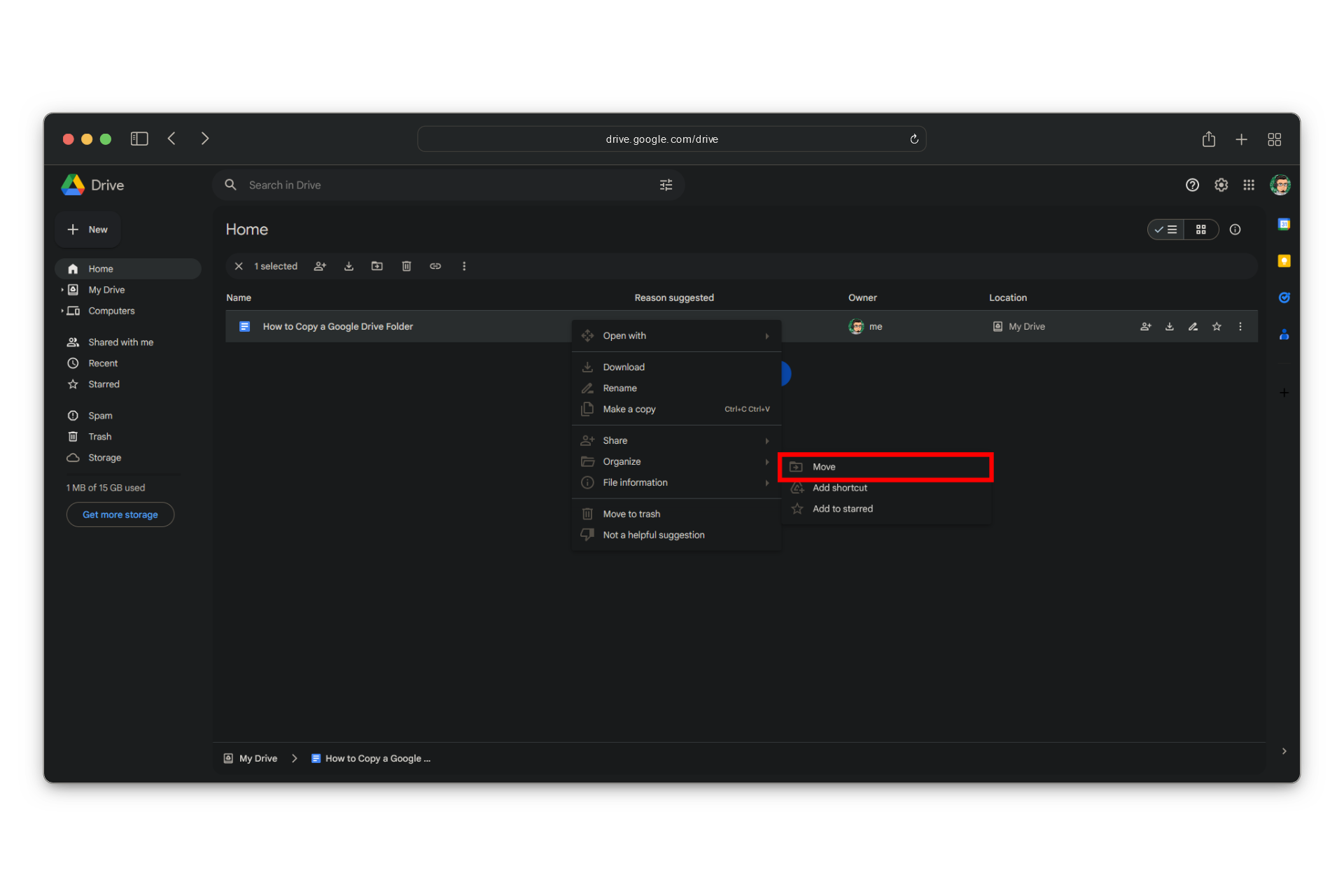How to Copy a Google Drive Folder: 3 Easy Methods [2024]
- Google Drive lacks a built-in feature for copying folders, but various methods exist to achieve this on a desktop.
- Key methods include using the Google Drive web interface for individual file copying, downloading and uploading for entire folders, and Google Drive for Desktop for syncing files and folders directly from your computer.
- To keep your digital files organized and streamlined, consider adopting a logical folder structure, consistent file naming conventions, and regularly managing your Drive space for optimal usage.
Efficient management of digital files is crutial. Google Drive, a popular cloud storage service, simplifies storing, sharing, and collaborating on files. However, organizing folders can pose challenges, especially when duplicating them for backup or sharing.
This guide streamlines the process, offering methods to copy folders in Google Drive on desktop. We’ll ensure your data is replicated seamlessly, whether for backup or sharing purposes. Mastering this skill is essential in today’s interconnected world. By the end, you’ll understand various copying methods, their nuances, and how to choose the best one. But first, let’s explore how folders function in Google Drive.

Table of Contents
How Folders Work in Google Drive?
Folders in Google Drive function as a means to organize and manage your files. Here’s a detailed explanation of how they work:
↪ Creating a Folder:
- To create a new folder, navigate to Google Drive at drive.google.com.
- Click on the “New” button on the left side.

- Then select “New Folder”.

- Enter a name for your folder and click “Create”.

↪ Moving Files into Folders:
- You can move files into folders by dragging them directly into the desired folder.
- Alternatively, right-click on the file, select “Organize” and then click “Move”, then choose the folder where you want the file to go.

↪ Creating Shortcuts:
- Shortcuts in Google Drive allow you to access a file or folder from multiple locations without creating duplicate copies.
- To create a shortcut, right-click the file or folder and choose “Organize” and then click “Add Shortcut”. Then select where you want the shortcut to appear.

↪ Organizing with Color-Coding and Stars:
- You can color-code folders for better visual organization by right-clicking on a folder and selecting “Organize”, a default color palette will appear, allowing you to choose your desired color for your folder.

- Star important files and folders for quick access by right-clicking and selecting “Organize” and then choosing the “Add to starred” option.

↪ Deleting and Restoring Files:
- To delete a file or folder, right-click it and select “Move to trash”. To restore it, go to the “Trash” and right-click on the item, then select “Restore”.

↪ Using Naming Conventions:
- It’s helpful to use a consistent naming convention for your files and folders to make them easily identifiable.
READ MORE: How to Move Google Drive Contents from One Account to Another & Change Ownership ➜
How to Copy a Google Drive Folder?
Google Drive does not provide a native feature to copy entire folders within the web interface, but these methods serve as workarounds.
Method 1: Using Google Drive Web Interface
- Open Google Drive: Go to Google Drive on your web browser and sign in with your Google account.
- Select Files: Navigate to the folder you want to copy, open it, and select all the files inside.

Select the contents of the folder you want to copy - Make a Copy: Right-click on the selected files and choose “Make a copy”. Google Drive will create copies of these files.

Select “Make a Copy” - Create New Folder: Click on “My Drive”, then click the “New” button, and select “New Folder” to create a new folder.

Click “New Folder” - Move Copied Files: Select all the copied files, right-click, and select “Organize” and then choose “Move”.

Organize > Move - Select Folder: In the pop-up window, navigate to the new folder you created and click “Move Here”.

Select the destination folder and click “Move”
However, this method becomes cumbersome when dealing with a large number of files in the folder. Each copied file will have the prefix “Copy of-“ added to its name, requiring manual removal for those who want to keep the original file names intact.
READ MORE: How to Add Google Drive to Windows Explorer Sidebar ➜
Method 2: Copying Folder via Download and Upload
If you don’t want to rename files after moving them, you can follow these steps to copy a Google Drive folder:
- Select all the files in the folder you want to copy. Right-click on the selected area and choose “Download.”

Click “Download” - Google Drive will put the files into a zip folder and download it to your computer. Once downloaded, click on the dropdown arrow next to the file name and choose “Show in folder.”

Click “Show in Folder” - Move the zip file to a new empty folder on your computer. Right-click the zip file and select “Extract All.” Choose a location to extract the files and click “Extract.”

Click “Extract Here” - Return to Google Drive and find where you want to put the copied folder. Click on “New” and then select “New Folder.” Name the folder and click “Create.”

Create New Folder - Open the new folder. Right-click inside it and choose “File upload.”
- Navigate to the folder on your computer where you extracted the files. Select the extracted files and click “Open.”

Select Files and Click “Open” - This will upload the files from your computer to the new folder in Google Drive. They will keep their original names, so you won’t need to rename them again.
READ MORE: How to Access Google Drive From Ubuntu File Manager? ➜
Method 3: Using Google Drive for Desktop
- Begin by installing Google Drive for Desktop on your Windows PC or Mac. To do this, visit your Google Drive account, click on the gear icon at the top right, and select “Get Drive for desktop.” Follow the provided instructions to complete the installation.

Click “Get Drive for Desktop” - During the installation process, ensure to tick both boxes that allow linking folders between your computer and Google Drive. Then, proceed by clicking “Install.”

Tick both the boxes and Click Install - Once installed, open Google Drive and navigate to the left menu to configure sync settings. Choose between “Stream files” to sync manually selected files or “Mirror files” to sync your entire Google Drive. Confirm your selection by clicking “Save.”
- To copy a folder, open File Explorer on your computer and locate the desired folder within your Google Drive folder.

Navigate to the Folder you want to copy within your Google Drive - Copy the entire Folder or open the folder, select its contents, right-click, and choose ‘Copy.’ Next, decide where you want to place the files within your Google Drive folder structure.

Copy the Folder - Right-click in the desired location and select “Paste.” Optionally, you can rename the copied folder if necessary.

Simply Press “Ctrl + V” to paste the copied files in the new folder - Allow some time for the folder to sync with Google Drive. Once the syncing process is complete, you’ll find the copied folder along with all its contents in your Google Drive.

The copied Folder/Files will now show up in your Google Drive
READ MORE: How to Recover Permanently Deleted Files from Google Drive? ➜
Bonus: Tips and Tricks to Use Google Drive to its Fullest
Here are some tips and tricks to help you make the most of Google Drive while keeping your digital files organized, synced, and secure:
- Folder Structure: Establish a logical folder structure, using categories like “Work,” “Personal,” and “Projects,” with subfolders for further organization. This minimizes clutter and facilitates easy file retrieval.
- File Naming Conventions: Adopt descriptive file names with relevant keywords for better searchability. Consistency in naming conventions, such as using the “YYYY-MM-DD” format for date-based files, aids in maintaining order.
- Offline Access: Enable offline access to work seamlessly without an internet connection by navigating to Settings > General > Offline and turning on the option.
- Sync Desktop Folders: Use Google Drive Backup and Sync to synchronize specific folders with Drive, ensuring files are always up to date across devices.
- Version History: Access and restore previous file versions effortlessly by right-clicking on a file and selecting “Version history,” beneficial for collaborative work.

- Sharing and Permissions: Leverage Drive’s sharing capabilities to collaborate efficiently by assigning specific permissions (view, comment, edit), while being cautious about public sharing for security and privacy.
- Two-Step Verification: Enhance Google account security by enabling two-step verification via My Account > Security > 2-Step Verification.
- Search Operators: Utilize search operators like “type:pdf,” “owner:me,” or “modified:today” to streamline file searches within Google Drive.
- Trash Management: Regularly review and permanently delete unnecessary files from the Trash to free up storage space and maintain an organized Drive.
- Third-Party Integrations: Explore and integrate third-party apps such as DocuSign, HelloSign, and Notion to enhance productivity and collaboration within Google Drive.
Remember to back up critical files outside of Google Drive as well. By following these tips, you’ll optimize your Google Drive experience and keep your digital files safe.
READ MORE: How to Clean Google Drive from Ransomware ➜
Conclusion
In this guide, we’ve discussed the step-by-step process of duplicating a Google Drive folder. Whether you’re migrating files, collaborating with others, or simply organizing your data, copying folders can be a powerful tool. Remember these key points:
- Select the Right Method: Depending on your needs, choose between making a copy within the same Drive or moving it to a different location.
- Preserve Permissions: Be mindful of sharing settings and permissions. Ensure that collaborators retain access to the copied folder.
- Check for Updates: Regularly sync your copied folder to stay up-to-date with any changes in the original.
- Stay Organized: Use descriptive folder names and maintain a logical structure to keep your files manageable.
Copying a Google Drive folder is more than just a technical process; it’s about efficiency, collaboration, and maintaining order in your digital workspace. Now that you’re equipped with the know-how, go ahead and duplicate those folders with confidence!
FAQs
Absolutely! After copying, rename the folder by right-clicking on it and selecting “Rename.”
Google Drive doesn’t impose a strict limit, but large-scale copying might take time.
Google Drive doesn’t natively support copying entire folders, but workarounds exist.
Yes, the copied folder counts toward your Google Drive storage quota.
Directly copying between accounts isn’t possible; you’d need to download and re-upload.
Arrange files into subfolders or categorize them after pasting.
 Reviewed by
Reviewed by 




